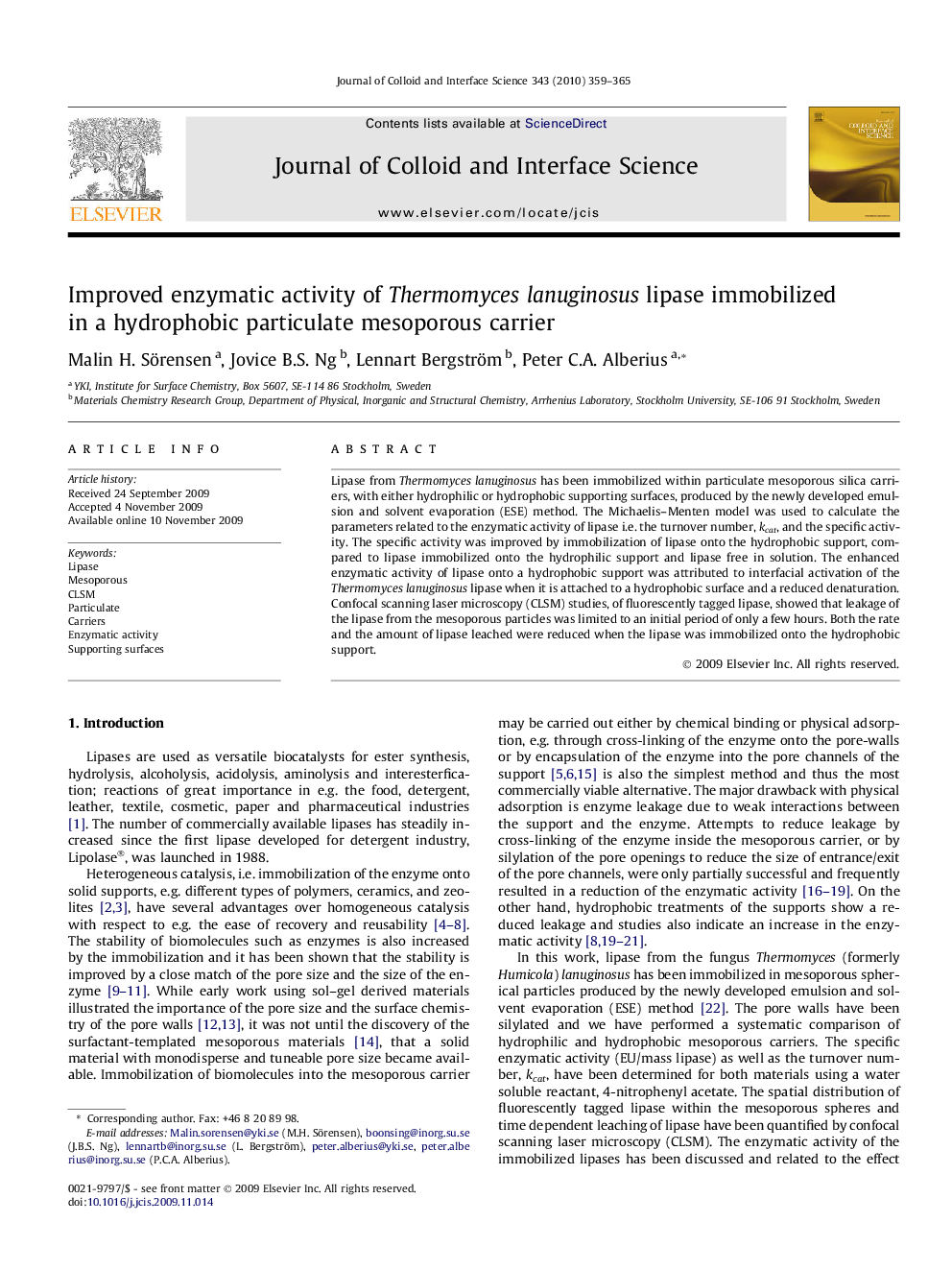| Article ID | Journal | Published Year | Pages | File Type |
|---|---|---|---|---|
| 609449 | Journal of Colloid and Interface Science | 2010 | 7 Pages |
Lipase from Thermomyces lanuginosus has been immobilized within particulate mesoporous silica carriers, with either hydrophilic or hydrophobic supporting surfaces, produced by the newly developed emulsion and solvent evaporation (ESE) method. The Michaelis–Menten model was used to calculate the parameters related to the enzymatic activity of lipase i.e. the turnover number, kcat, and the specific activity. The specific activity was improved by immobilization of lipase onto the hydrophobic support, compared to lipase immobilized onto the hydrophilic support and lipase free in solution. The enhanced enzymatic activity of lipase onto a hydrophobic support was attributed to interfacial activation of the Thermomyces lanuginosus lipase when it is attached to a hydrophobic surface and a reduced denaturation. Confocal scanning laser microscopy (CLSM) studies, of fluorescently tagged lipase, showed that leakage of the lipase from the mesoporous particles was limited to an initial period of only a few hours. Both the rate and the amount of lipase leached were reduced when the lipase was immobilized onto the hydrophobic support.
Graphical abstractInterfacial activation of fluorescently-tagged lipase’s active site via hydrophobic interaction with the hydrophobilized mesopore walls which it is immobilized in.Figure optionsDownload full-size imageDownload high-quality image (133 K)Download as PowerPoint slide
